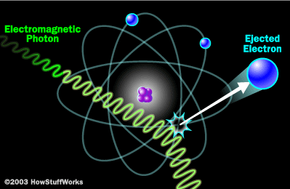The Nuclear EMP Threat
The concept of EMP weaponry has been around for a long time. From the 1960s through the 1980s, the United States was most concerned with the possibility of a nuclear EMP attack.
This idea dates back to nuclear weapons research from the 1950s. In 1958, American tests of hydrogen bombs yielded some surprising results. A test blast over the Pacific Ocean ended up blowing out streetlights in parts of Hawaii, hundreds of miles away. The blast even disrupted radio equipment as far away as Australia.
Advertisement
Researchers concluded that the electrical disturbance was due to the Compton effect, theorized by physicist Arthur Compton in 1925. Compton's assertion was that photons of electromagnetic energy could knock loose electrons from atoms with low atomic numbers. In the 1958 test, researchers concluded, the photons from the blast's intense gamma radiation knocked a large number of electrons free from oxygen and nitrogen atoms in the atmosphere. This flood of electrons interacted with the Earth's magnetic field to create a fluctuating electric current, which induced a powerful magnetic field. The resulting electromagnetic pulse induced intense electrical currents in conductive materials over a wide area.
During the cold war, U.S. intelligence emphasized the idea that the Soviet Union could launch a nuclear missile and detonate it some 30 miles (50 kilometers) above the United States to achieve the same effect on a larger scale. They asserted that the resulting electromagnetic burst would knock out electrical equipment across the United States.
These days, U.S. intelligence is giving non-nuclear EMPs (NNEMPs) much more attention. These weapons wouldn't affect as wide an area because they wouldn't blast photons so high above the Earth. But they could be used to create total blackouts on a more local level.
